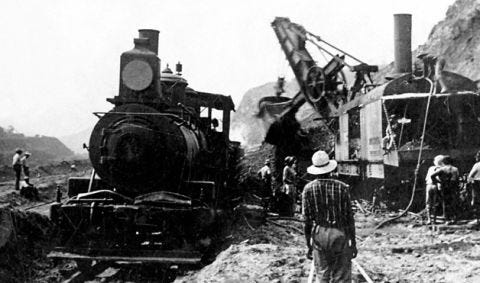
(Ed.'s Note: Since we were kids, we were treated to corridos about local heroes. Many of us thought that they were just fabrications. Maquina 501 was a popular song about a man who gave his life to save the people of a town along the railroad when one of the cars carrying dynamite caught on fire.Locally, it was made famous by norteno group Los Alegres de Teran. Just yesterday, the people of the town celebrated his sacrifice since it happened Nov. 7, 1957. His story is below.)
Mexconnect
There are all kinds of heroes, from the international arena to the local, and in one's own neighborhood or family. Most heroes are defined by courageous or exemplary behavior while facing extreme adversity or challenge. Each profession has heroes, too those who make significant contribution to advancing its purpose or goals.
This is the story of a man, Jesús García, suddenly faced with a life and death dilemma, who valiantly tried to avert a tragedy of monumental proportions. He only partly succeeded, but he had made the choice to try, knowing the huge personal risk he was taking. He acted heroically, and he has been recognized as a hero, in Mexico and among railroad buffs, and to a limited extent, in the United States.
Nacozari lays in northeastern Sonora, near the U. S. border at Arizona. A large body of copper ore near the old town of Nacozari was named the Pilares de Nacozari. In 1895, the American company Phelps Dodge purchased the property and through a subsidiary, Moctezuma Copper Company, made large investments to increase production.
There are all kinds of heroes, from the international arena to the local, and in one's own neighborhood or family. Most heroes are defined by courageous or exemplary behavior while facing extreme adversity or challenge. Each profession has heroes, too those who make significant contribution to advancing its purpose or goals.
This is the story of a man, Jesús García, suddenly faced with a life and death dilemma, who valiantly tried to avert a tragedy of monumental proportions. He only partly succeeded, but he had made the choice to try, knowing the huge personal risk he was taking. He acted heroically, and he has been recognized as a hero, in Mexico and among railroad buffs, and to a limited extent, in the United States.
Nacozari lays in northeastern Sonora, near the U. S. border at Arizona. A large body of copper ore near the old town of Nacozari was named the Pilares de Nacozari. In 1895, the American company Phelps Dodge purchased the property and through a subsidiary, Moctezuma Copper Company, made large investments to increase production.
 The mine at Pilares was expanded and a new town and processing center were built nearby. Material and equipment for the huge project were brought in from Arizona on mule drawn wagons. Well over half of Mexico's copper production came from Sonora. At Pilares de Nacozari, the amount of ore mined increased 86,660 tons in 1901, to 348,630 tons in 1910, and to 542,363 tons in 1912.
The mine at Pilares was expanded and a new town and processing center were built nearby. Material and equipment for the huge project were brought in from Arizona on mule drawn wagons. Well over half of Mexico's copper production came from Sonora. At Pilares de Nacozari, the amount of ore mined increased 86,660 tons in 1901, to 348,630 tons in 1910, and to 542,363 tons in 1912.Ore moved from the concentrator at Nacozari on a six mile narrow gauge railway owned and operated by Moctezuma Copper Company. The narrow gauge line was steep as the mine lay some two thousand feet higher in the mountains northeast of the company town of Nacozari. The main rails from Arizona also came through town and ended at the concentrator.
Large amounts of dynamite were imported from Arizona for blasting the ore out of the hard rock mine, and the most convenient location for the dynamite storage was near the concentrator where the rail lines were close together. Also nearby were mammoth shops, warehouses, a power plant with gas storage tanks, and just across the river, the town of Nacozari with about 5.000 residents.
Jesus was a hardworking man and at the age of 26 he was in line to be chief engineer for the company railroad. He was born November 13, 1883 in Hermosillo, and had arrived with his mother and seven older siblings in Nacozari in 1898. Handsome, energetic, courteous Jesús García was well liked by all. On November 7, 1907, he went to work as usual after a night; it is said, full of music and romance. However, on that day, his last, he proved to be a hero.
To read the rest of his story, click on link below:





5 comments:
Aqui hay puros mojados que se creen gringillos
y puros gringillos que se creen mojados smh
What? We always listened to KRIO and they didn't play corridos.
Aquí hay un jotito perico racista que se cree Gringo porque tiene dos novios viejitos Biden y Sanders! Chinga tu culo perico jotito racista!
The savior of insults is here at 2:12pm. Go back to san antonio pendejo. Con tu perico jotingo y manitas tu otro querigo guay.
@10:24 Stop reading Hellcat comic magazines pendejo racist Coco hillbilly jotito parrot! Stop eating your green shit! It's making you go racist insane! You need to go to a San Antonio health clinic!
Post a Comment